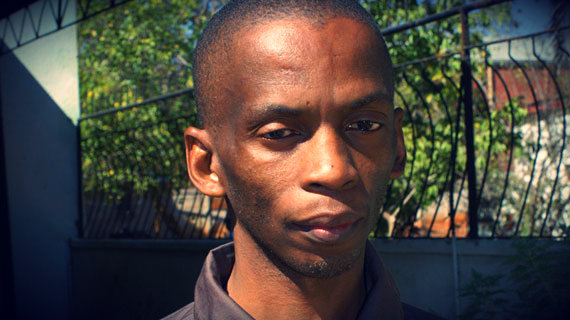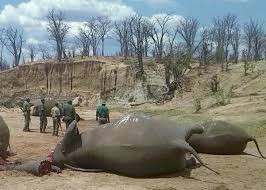
THE Zimbabwean narrative has been dominated by the motif of conflict polarisation, victimism, monolingusim and monoculturalism.
This has been accentuated by pervasion of State institutions and national emblems. There is a need to deconstruct the myth that patriotism is the preserve of one political party or one institution or even one ethnic group.
I will attempt albeit not exhaustively to address some of the things we need to collectively disabuse the country and ourselves of if we are to reconstruct a new national narrative.
History Just a week ago there was a national furore after an army publication attributed the shelling of oil depots in Salisbury, now Harare, to Zanu PF’s struggle military wing Zanla. Zipra veterans rightly condemned this flagrant distortion of history.
What must be noted, however, is that not only is this a distortion of the country’s history, but significantly the ramifications of this distortion of history is that there no sense of shared history and thus no shared destiny or sense of nationhood.
We simply cannot build a country on a false sense of nationalism unless we predicate our nationhood on accurately captured and shared history.
The first people It is a national scandal that the original occupants of Zimbabwe, the San are not officially represented in any political institution neither is their history, language and culture reflected in any national symbol or emblem.
The usual ethnic debate in Zimbabwe excludes the narrative of the San people and their contribution to the history of the country.
- Chamisa under fire over US$120K donation
- Mavhunga puts DeMbare into Chibuku quarterfinals
- Pension funds bet on Cabora Bassa oilfields
- Councils defy govt fire tender directive
Keep Reading
Contrary to popular belief the San have and did contribute to the liberation of Zimbabwe and according to Zephaniah Nkomo a former Zipra intelligence officer, there were quite a number of San who participated in the liberation struggle as Zipra combatants.
Shared history In order for the country to move forward and for all Zimbabwean to have a sense of national pride, it is important to take note of the contributions and the cultures of the diversity of the Zimbabwean communities including the Sotho, Venda, Nambya, Ndebele, Tswana, Xhosa, Shangaan, Ndau, San, Karanga, Manyika, Zezuru, Whites, Asians and Coloureds. It is actually a false notion that whites, Asians and coloureds did not contribute to the history of the country.
Zipra had the likes of Jeremy Brickhill in its intelligence unit while the likes of Joseph Culverwell, Amina Hughs and others contributed immensely to Zanu PF.
It is therefore a tragedy when people of coloured origin such as former Gwanda mayor (my junior at Milton High School) Lionel de Necker are treated as foreigners in the land of their birth.
Zimbabwe desperately needs to capture the values of reconciliation enunciated in the Constitution through word and deed not through divisive rhetoric inciting hatred against other racial and ethnic groups.
Josiah Tongogara the legendary Zanu war hero was quoted during the struggle stating that “we are fighting not against the whites, but against a system of oppression”.
Joshua Mqabuko Nkomo famously stated that “we did not fight to bring Jones or Brown down, but to lift up Ndlovu or Ncube so that both black and white are liberated”. Tragically today we have a form of a cabal of black kleptocrats eating on behalf of the majority and arrogating the national interest to themselves.
History The history of the country needs to be told accurately and we should even be honest enough to admit that originally, Zimbabwe was not one country or one nation, but was “commonwealth of nation” including the Ndebele, the various Shona ethnic groups, the Kalanga, the San and various other ethnic groupings who were at one time or the other subjugated by dominant military and economic groupings.
This will help us to have an understanding of the evolution of the modern Zimbabwe nation state.
However due to the monolinguistic, monoparty and monoethnic historical narrative nature of the official Zimbabwe narrative there are some who are questioning the very concept of a Zimbabwean nation state as an ideological and political reality.
Whether these people are right or not is not the issue, but the issue is our failure as a nation to craft a history and indeed a vision which takes into cognizance our unity in diversity.
In order to understand the genesis and evolution of the phenomenon of the modern Zimbabwean nation state with all its contradictions it is important to acknowledge the various historical epochs and episodes which contributed to the germination and growth of Zimbabwe as a nation state including but not limited to
- Pre-colonial Zimbabwe as a geographical and not political construct,
- Colonialism,
- The first Imfazo (armed uprising),
- Genesis of nationalism,
- The armed struggle — official version of the armed struggle claim that the liberation war begun in 1966 but some Zapu leaders dispute this arguing that as far back as 1962 Zapu already had weapons to wage the struggle and some operations had begun as evidenced by the arrest of young Zapu cadré Bobylock Manyonga in the early sixties,
- Unilateral Declaration of Independence,
- Independence,
- Gukurahundi,
- Economic Structural Adjustment Programme,
- The lost decade (2000 to 2014),
Unless this history is told then old wounds will not heal and the country will not move forward with a sense of a shared future because of a shared past.










